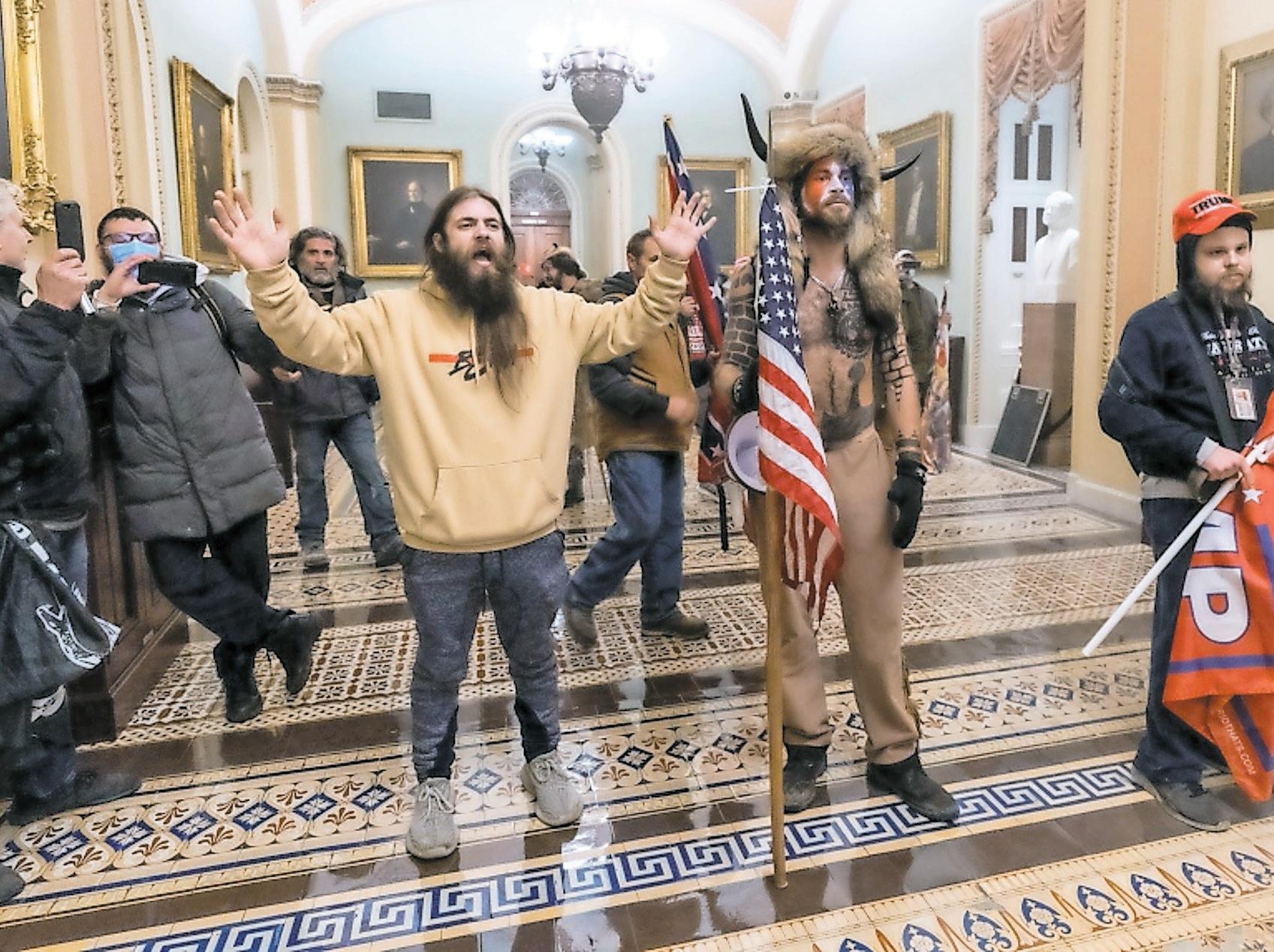
6 minute read
U.S. CONSUMER CONFIDENCE BOUNCES BACK
Consumer confidence bounces back, ending year on high note
Advertisement
Matt Ott – The Associated Press
WASHINGTON — The confidence of American consumers rebounded this month to end the year on a high note despite high inflation, rising interest rates that have made credit cards and mortgages more expensive, and growing anxiety about a possible recession. The Conference Board reported Wednesday that its consumer confidence index rose to 108.3 in December, up from 101.4 in November. It’s a sharp rebound, pushing the index to its highest level since April. Last month’s figure was the lowest since July. The business research group’s present situation index – which measures consumers’ assessment of current business and labor market conditions – also rose, to 147.2 this month from 138.3 in November. The board’s expectations index – a measure of consumers’ six-month outlook for income, business and labor conditions – rose to 82.4 from 76.7. Readings near or below 80 are associated with recession. Lynn Franco, senior director of economic indicators at the Conference Board, noted that inflation expectations retreated in December to their lowest level since September of last year, mostly due to recent declines in gas prices. The number of people saying they planned to go on vacations rose, but the number of those intending to purchase homes and big-ticket appliances declined. “This shift in consumers’ preference from bigticket items to services will continue in 2023, as will headwinds from inflation and interest rate hikes,” Franco said. Getting a clear read on recent consumer behavior has been tricky. The government reported last week that Americans cut back sharply on retail spending in November as the holiday shopping season began. High prices and rising interest rates are forcing families, particularly lower income households, to make harder decisions about what they buy. Retail sales fell 0.6% from October to November after a sharp 1.3% rise the previous month. However, Americans opened their wallets on Black Friday and over the post-Thanksgiving weekend. Spending on Black Friday jumped 12% compared with a year ago, according to MasterCard Spending Pulse, though that figure is not adjusted for inflation. And on so-called “Cyber Monday” earlier this week Americans boosted their online spending by 5.8% from a year earlier, Adobe Analytics said. Americans have been resilient in their spending since inflation first began to spike almost 18 months ago, but the capacity to maintain that pace during a period of high inflation may have begun to ebb. Inflation has retreated from the fourdecade high it reached this summer but remains elevated, enough to erode the spending power of Americans. Prices were 7.1% higher in November than they were a year ago. A rising number of households are stepping up their use of credit cards – or “buy now, pay
In fact,
Americans have been resilient in their spending since inflation first began to spike almost 18 months ago, but the capacity to maintain that pace during later” plans as prices rise, and that can’t continue indefinitely. Americans are also dipping into savings, which rose sharply during the pandemic as government stimulus checks and the postponement of spending on travel and entertainment fattened bank accounts. a period of high inflation may have begun to ebb. The savings rate in October slid to 2.3%, the lowest level since 2005. The willingness to buy a home has faded with mortgage rates that have doubled in the past year. The National Association of Realtors reported Wednesday that sales of previously occupied U.S. homes slowed for the tenth consecutive month in November. Sales plunged 35.4% from November last year.
Jerry Pierce
Co-Founder, The Unity Project, Wash. DC
The real story of January 6th
For almost two years in the United States the date “January 6th” has become almost as famous as “July 4th”. January 6th has evolved to represent evil, anti-patriotism, and sedition. We recall images of the US Capitol with smoke, broken windows, and chaos. But what is January 6th really all about? What was the real purpose of January 6th, and in particular, January 6th, 2021? Why did the masses of Trump supporters choose to roll into Washington DC on that date? And why did the members of the US Congress happen to be together at the Capitol building at that time? What is the real story of January 6th?
The fact is that on January 6th, 2021, the US Congress was in joint session at the US Capitol to perform their constitutional duty. They were there following a legal and constitutional process that had been adhered to since the late 1800’s. Article II of the U.S. Constitution (and later the 12th and 23rd Amendments, plus the Electoral Count Act (ECA) of 1887) established the Electoral College and the outlines of congressional and other responsibilities that take place between Election Day and the presidential inauguration. Americans understand now more than ever how important this portion of the US election process is.
Congress meets in a joint session to count the electoral votes and the US Constitution states that this counting will be done on January 6th after the presidential election. Congress counting of the electoral votes is the final procedure before the presidential inauguration and is the final confirmation of the results of the election. Although not the ideal situation, at this time in the process the results of a United States presidential election could be legally changed. The ECA of 1887 states that if objections are raised about the electoral votes from certain states not being “regularly given” or a voter is not “lawfully certified,” an objection may be made in writing by at least one senator and one member of the House of Representatives. The joint session is suspended while the two chambers meet separately for a maximum of two hours of debate. Then, a majority vote is taken by the Congress to accept or reject the objection.
In 2005, two Democratic members of Congress objected to President George W. Bush’s victory in Ohio, but both chambers overwhelmingly rejected this objection. Following the 2000 and 2016 elections, several House members planned to object to electoral votes from certain states but found no senators to join them. In 2021, the Trump plan was to follow this process because they believed there were irregularities in the electoral votes of certain states. In 2021 Republicans objected to results in Arizona, Georgia, Michigan, Nevada, and Pennsylvania. The objections to Arizona and Pennsylvania were supported by senators who would have suspended the joint session and initiated two hours to debate the objections. This, however, never took place. This is

Supporters of U.S. President Donald Trump are confronted by U.S. Capitol Police officers outside the Senate Chamber inside the Capitol in Washington. >AP Photo/Manuel Balce Ceneta
when everything went to hell.
Security at the US Capitol was breached, and the process of the electoral vote confirmation was suspended for the safety of the members. The fact is that those who broke into the capitol destroyed any chances the Republicans and President Trump’s plan had to object enough electoral votes to necessitate the US Congress to vote and to decide the winner. When things finally settled down and Congress returned to confirm the vote, not enough Republicans had the will to continue the fight although 147 Republicans did object to the results in the states of Arizona and Pennsylvania.
The January 6th process is nothing new. It is a legal and constitutional safeguard ensuring that our election process gets it right. Who knows what would have happened with the 2020 election if there hadn’t been the riot and breaching of the capitol to interrupt the January 6th electoral vote confirmation process? We will never know. It makes you wonder what January 6th, 2025, will bring.



